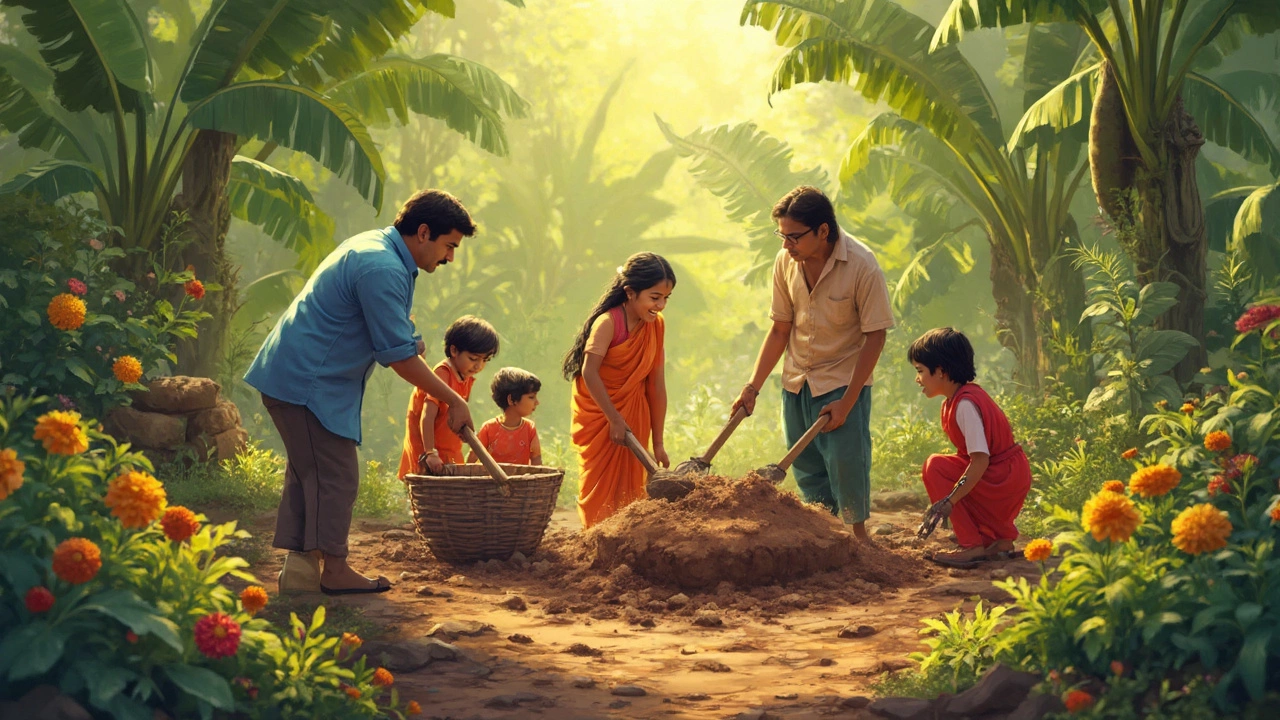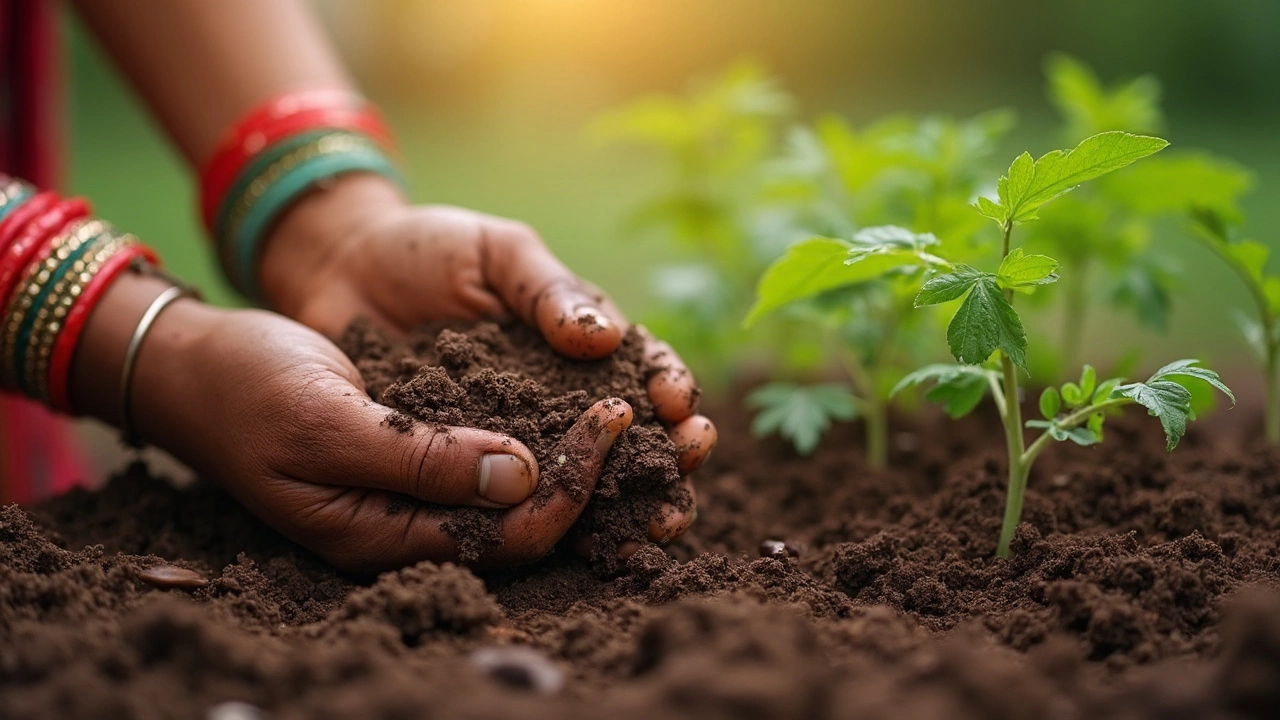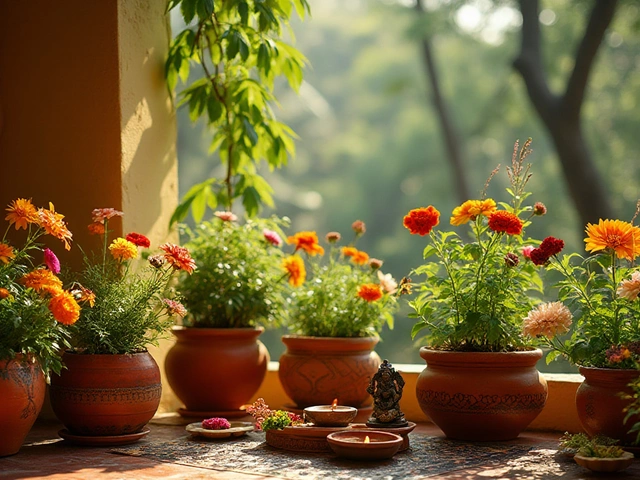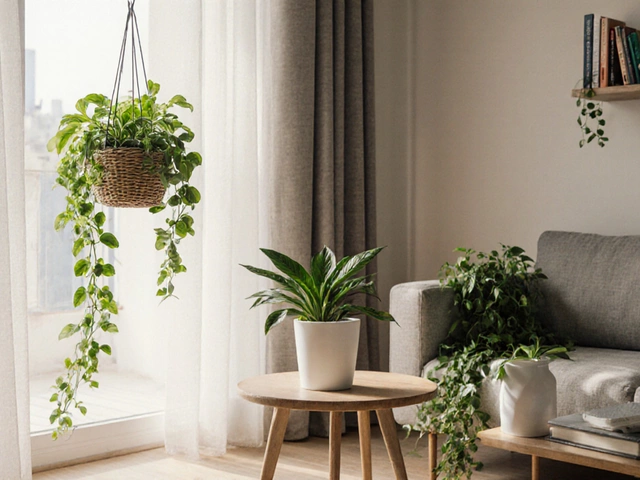How to Fix Hard Soil in Your Garden for Healthier Plants

How to Fix Hard Soil in Your Garden for Healthier Plants
Nothing sets you up for a morning meltdown like watching your kids trudge over the so-called 'lawn' only to come inside caked in dust because that patch of earth is tough as a brick. If you've ever tried to dig in your garden and felt like you needed a jackhammer instead of a shovel, you're not alone. Hard, compacted soil is the silent enemy of thriving plants. Plants just can't push their roots through, water simply runs off, and you end up pulling weeds far easier than you ever grow carrots.
Why Hard Soil Happens—and Why It’s Bad News for Your Garden
Hard soil doesn’t get that way overnight. You probably know this if you’ve inherited an older garden or even a bare patch that's never seemed to grow anything except weeds. Soil compacts for a bunch of reasons—years of footsteps, lawnmowers that weigh half as much as a small car, or even just regular rain that beats the tiny spaces out of the ground. Clay soils, which are pretty common in backyards around the world (especially in the Midwest and in places like Georgia), have tiny mineral particles that lock together tight.
This toughness spells disaster for your plants for a simple reason: roots need oxygen. When soil is dense, those air pockets that should cradle water and nutrients are crushed. So roots suffocate. Water can’t soak in, so it either rushes off, carrying your best fertilizer with it, or puddles on top, inviting a mosquito party. In the end, what you get is weak, struggling plants. Rohan, my own son, once called our tomato bed 'as hard as concrete,' and I didn't blame him—it basically was.
You might see visible clues: rainwater pouring off the edge of a garden bed, cracks licking across the sunbaked earth, or roots circling at the bottom of your potted plants because they can’t break out. And then there’s the digging: if breaking ground feels like a mini workout, you’ve got compacted soil. Left alone, this will only get worse every season. Even planting more doesn’t fix it—roots from big plants can add to the buried tangles below, tangling instead of opening up space.
Gardeners have sometimes just dumped more topsoil or mulch on top, hoping to 'bury' the problem. That pretty much just hides it and won’t help your plants in the long run. It’s all about what’s happening beneath the surface. Actually, the best soils are about 25% air, 25% water, 45% minerals, and 5% organic matter. With compacted soil, those air and water spaces are squeezed out. You can actually feel the difference if you grab a chunk of sandy or loamy soil compared to hard clay—it breaks apart easily and even smells better (yes, healthy soil has a sweet, earthy smell).
Another sneaky problem? Microbes. Healthy dirt is like a city for billions of bacteria, fungi, and tiny bugs that chew through organic matter and build a buffet for your roots. With hard soil, it’s like the city powers down—the good guys just can’t do their job as easily, which means slow breakdown of nutrients and less help for your plants. Everything starts grinding to a halt below the surface.

Smart, Practical Ways to Loosen Hard Soil
You don’t need a team of landscapers or expensive tools to turn around tough soil. Fixing it is all about adding the right things and working with nature, not against it. Here are the best ways I’ve found—through plenty of messy weekends and busted shovels—to soften up problem spots without wrecking your back or budget.
Fix hard soil by heading straight to the root of the issue: you’re missing air, organic matter, and a bit of time. My go-to trick? Start with organic amendments. Compost is pure gold. Work in a couple of inches of well-rotted compost on top and dig it into the first six inches with a garden fork. Not only does this add food for the microbes, it also makes the soil fluffier and easier for roots to explore. If you’re low on compost, shredded leaves or even bagged manure (well-aged, so you don’t burn your plants) can help. Skip peat moss for the sake of the planet—coconut coir is a more sustainable option if you want something light and fluffy.
Double digging is old-school, but wow does it work. It’s basically digging out a trench, working in amendments, and then filling it back as you go, breaking up every clod you see. It’s tiring, but once you do it, you’ll see the soil stay loose for seasons. Or, if you’d rather let mother nature do the heavy lifting, try sheet mulching—lay down layers of cardboard, compost, straw, and wait a few months. The microbes and worms will pull the goodies down right where you need them, with minimal effort from you.
For seriously stubborn areas (driveways-turned-gardens or old play areas), it helps to aerate mechanically. That means plunging a garden fork or an aerator tool into the ground, wriggling it, and repeating a thousand more times. If you’ve ever aerated your lawn, you know the drill. The key: you’re not just poking holes, you’re creating little channels for rain and organic matter to work in. When I fixed the compacted strip beside my garage, aerating and top-dressing with compost made a night-and-day difference for the struggling hostas and ferns I’d planted.
Don’t ignore ground cover crops—these are my secret weapon. Plants like clover, annual ryegrass, or hairy vetch have roots that push and fracture dense soil while feeding it. Let them grow a season, then chop them down and turn the mass right back into the dirt. Even a kid can scatter seeds and help water these patches. Rohan loves seeing the bees hover on the clover blossoms, and it gives us a summer break from endless weeding, too.
Mulch, mulch, mulch! Covering the soil with straw, leaf mold, wood chips, or grass clippings (not from lawns doused in herbicide) does double duty. It keeps things cool, holds moisture, and invites worms to come feast under the surface—these little guys are free labor, drilling tunnels and moving decayed material into the soil profile. More worms, less work for you.
Regular watering is important, but don’t flood hard soil all at once, or water will just run off. Instead, try slow, soaking irrigation. Drip hoses or just a slow trickle from a regular hose works better than blasting with a spray. Water over mulch so the effect can seep down gradually.
If your soil is especially clay-heavy, consider adding gypsum. Unlike lime (which only helps acid soils), gypsum can help break up clay minerals and improve drainage without messing up pH. It doesn’t work magic overnight, but mix a few handfuls into the soil as you add compost, and give it time. Studies out of Texas A&M have shown this combination performs best when paired with organic matter, not alone.
Tiny bonus tip I learned from a neighbor: reuse coffee grounds and eggshells. Both are mild amendments, but sprinkled on the soil they help add texture, some trace nutrients, and keep pests from settling in. Just make sure you don’t pile them too thick, or they can compact themselves.

Keeping Soil Loose Year After Year
Once you’ve put in the hard work, you definitely want to keep your garden soil from getting tough all over again. The secret? Lighter touches, plenty of organic matter, and never letting soil sit bare. Seasonal maintenance is your new best friend.
First, avoid walking on garden beds at all costs. That pressure starts the compacting cycle again. If you need to get in among your plants, toss down some planks or stepping stones to spread your weight. I let Rohan help lay them out every spring, which saves both our backs and a few precious seedlings.
Keep feeding your soil. That means topping up with a new layer of compost, leaf mold, or aged manure every growing season, but don’t till deeply unless absolutely necessary. Science backs up that 'no-dig' methods protect soil structure and help beneficial fungi build strong networks—those white threads you see in healthy plots are like nature’s superhighways for nutrients and moisture.
Mulching isn’t a once-and-done affair. Refresh those layers every time they thin out, especially after heavy rains or if your chickens (if you have any) decide to scratch things up. Organic mulch breaks down and should be thought of like a living skin on your garden—it gets thinner as it feeds the ground beneath.
Rotate crops and play with different ground covers. Changing up what grows each year keeps pests confused and ensures no one plant family depletes all the same nutrients. Cover crops, even if you just let clover take over in winter, will keep soil loose and rich.
If you’re composting at home, make it a habit to dig little trenches between rows and dump those kitchen scraps right in. Microbes and worms will break them down fast, boosting the crumbly factor. The more diverse your soil life, the better your structure will be.
Don’t forget about water. Set up rain barrels or soaker hoses so your garden gets steady moisture, not wild swings from drought to downpour. Compacted soils love to shed water all at once, but healthy, loosened earth will drink it in slowly.
Need a quick test to see if your soil needs more TLC? Take a shovel and dig out a square foot section. If roots go deep, you see fat earthworms, and the soil crumbles nicely, you’re doing something right. If it’s dry, lifeless, and roots twist at the top, it’s time for another round of amendments and patience.
Turns out, fixing hard soil isn’t just about saving your plants—it's about letting the living world under our feet thrive too. My backyard grew bigger tomatoes, sweeter strawberries, and drew way more birds after fixing our compacted beds. Rohan says now it even 'smells like a farm'—which, for us at least, is the best sign of a living, breathing garden soil.
About
Gardener Support India is your go-to online destination for expert advice on gardening and horticultural services in India. Whether you're a beginner or an experienced gardener, our platform offers extensive resources, tips, and support tailored to Indian climates and plant species. Explore a wide range of guides on plant care, sustainable gardening practices, and innovative gardening solutions. Connect with local experts to enhance your gardening experience and maintain a flourishing garden. Our dedicated services aim to empower Indian gardeners with the knowledge and tools needed for a successful gardening journey.
Latest Posts


Mastering the Art of Container Gardening: Essential Tips for Thriving Terrace Gardens
By Alden Thorne Feb 4, 2025

Top Easy Houseplants for Beginners - Low‑Maintenance Indoor Greens
By Alden Thorne Oct 7, 2025

Does Apple Cider Vinegar Work as a Natural Insecticide? Facts, Recipes & Results
By Alden Thorne Jun 26, 2025

Write a comment